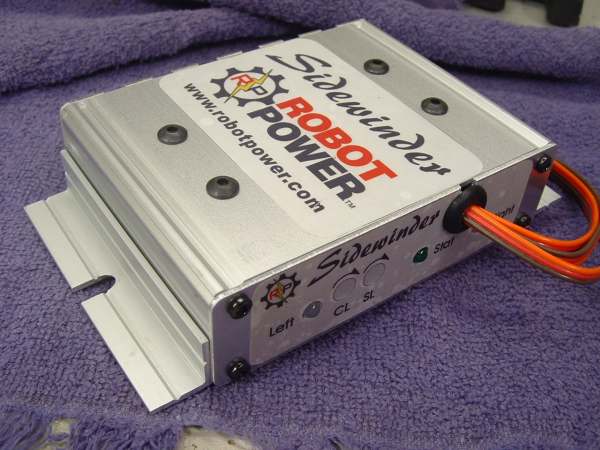etard
100 kW
Has anybody seen this controller? It seems way sicker than the HV110 for all the dual motor setups, current limited and everything.
Is there any Robot guys here?
Features
* Size: 108mm x 82mm x 28mm (4.25" x 3.23" x 1.1") without optional mounting brackets
* Weight: 365 grams (13 oz.) as shown
* Voltage: 14V to 48V Supply voltage (50V absolute max, down to 6V with external 12V supply)
* Current: 80A continuous each channel (150A peak 5 seconds)
* Current Limiting: Adjustable from 10A to 130A (sets the limit for both channels)
* Over Temp Limiting: fixed at 200F or 93C each channel independently sensed
* Four quadrant operation with regenerative braking
* Thermal Control: MOSFETs mounted to 0.5" Aluminum bars bolted to case (see below). No fans required.
* Indicator LEDs: Speed and direction of each motor channel and general signal status
* Receiver battery eliminator circuit (BEC) standard – may be disabled. Provides up to 100 mA of current at 5V to the RC receiver and other attached electronic circuits
* Command Format: R/C pulse standard, TTL serial optional
* Calibrate button to match Sidewinder to radio or other R/C signal source
* R/C Inputs: Left/Steer, Right/Throttle, Flip (inverts steering response when activated)
* Drive Modes selected via jumpers:
o Left/Right Mix (default - right input acts as steering and left as throttle)
o Mixed Mirror Left (left mixed output command sent to both output channels)
o Mixed Mirror Right
o Left/Right independent (Tank)
o Mirror (both outputs mirror a single input)
* Failsafe shuts off motor if R/C signal is lost
* Six high-current wires (2 battery, 2 each motor) may be soldered or attached via #8 bolt and ring terminals
* Expansion header for planned on-board radio tranceiver and single axis gyro (future). May be used for other special add-ons
* FLASH-based microcontroller with upgradeable software via in-circuit programming header. Software may be customized for unique applications. Contact us if you have special needs for your application.
http://robotpower.com/products/sidewinder_info.html

Is there any Robot guys here?
Features
* Size: 108mm x 82mm x 28mm (4.25" x 3.23" x 1.1") without optional mounting brackets
* Weight: 365 grams (13 oz.) as shown
* Voltage: 14V to 48V Supply voltage (50V absolute max, down to 6V with external 12V supply)
* Current: 80A continuous each channel (150A peak 5 seconds)
* Current Limiting: Adjustable from 10A to 130A (sets the limit for both channels)
* Over Temp Limiting: fixed at 200F or 93C each channel independently sensed
* Four quadrant operation with regenerative braking
* Thermal Control: MOSFETs mounted to 0.5" Aluminum bars bolted to case (see below). No fans required.
* Indicator LEDs: Speed and direction of each motor channel and general signal status
* Receiver battery eliminator circuit (BEC) standard – may be disabled. Provides up to 100 mA of current at 5V to the RC receiver and other attached electronic circuits
* Command Format: R/C pulse standard, TTL serial optional
* Calibrate button to match Sidewinder to radio or other R/C signal source
* R/C Inputs: Left/Steer, Right/Throttle, Flip (inverts steering response when activated)
* Drive Modes selected via jumpers:
o Left/Right Mix (default - right input acts as steering and left as throttle)
o Mixed Mirror Left (left mixed output command sent to both output channels)
o Mixed Mirror Right
o Left/Right independent (Tank)
o Mirror (both outputs mirror a single input)
* Failsafe shuts off motor if R/C signal is lost
* Six high-current wires (2 battery, 2 each motor) may be soldered or attached via #8 bolt and ring terminals
* Expansion header for planned on-board radio tranceiver and single axis gyro (future). May be used for other special add-ons
* FLASH-based microcontroller with upgradeable software via in-circuit programming header. Software may be customized for unique applications. Contact us if you have special needs for your application.
http://robotpower.com/products/sidewinder_info.html


